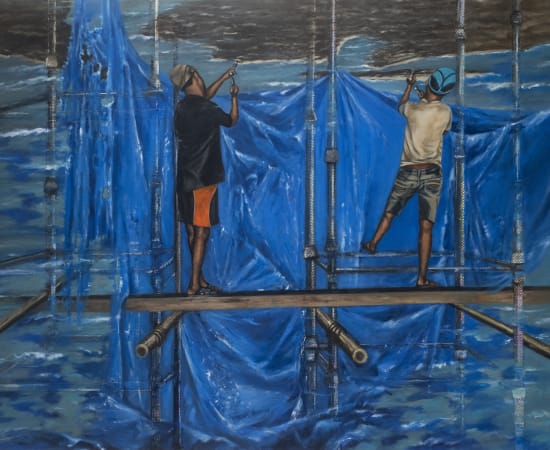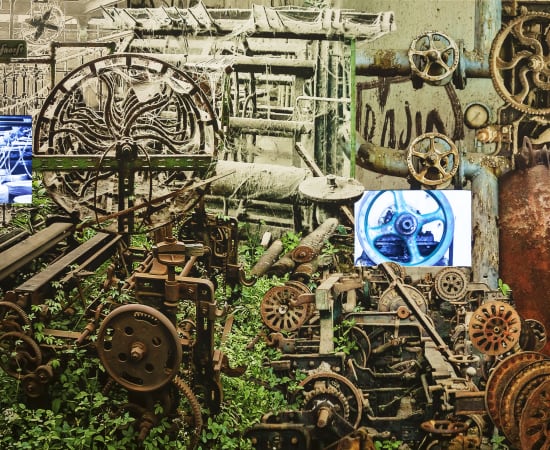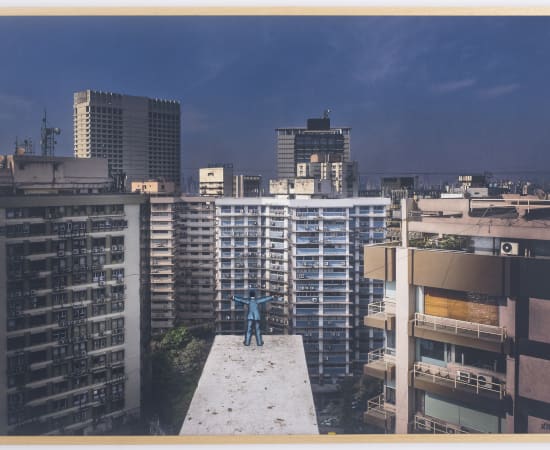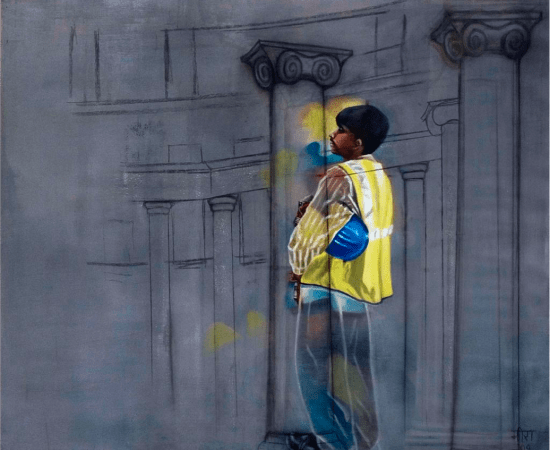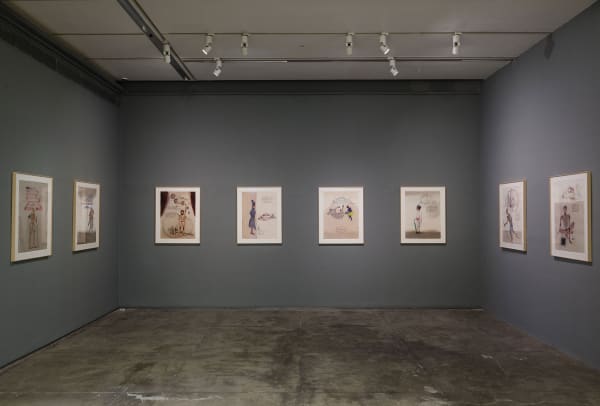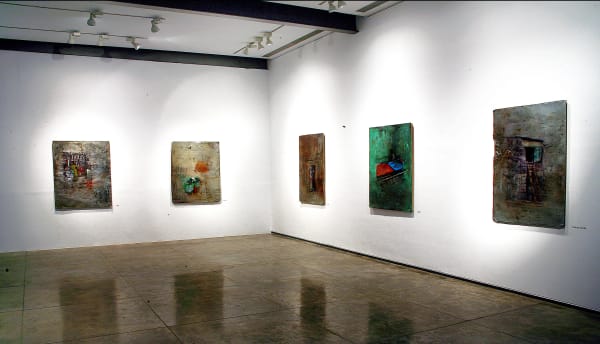Meera Devidayal b. 1947
My art is rooted in the urban context, including its ramifications on the changing countryside. The attempt is to turn a ‘found image’ into a visual metaphor, charged with new meaning. To touch the viewer into experiencing something he normally sees without seeing, in a different way.
-Meera Devidayal
b. 1947, in New Delhi, India
Being essentially an urban person, Devidayal's paintings are grounded in the plethora of images that a city throws up with its wild juxtaposition of irreconcilables. Her early work in the seventies took a humorous look at everyday life, blurring the boundaries between the sacred and the profane, gods-and-goddesses, screen-idols with interchangeable faces and gods behind bars in bathroom-tiled temples.
Her attempt has always been, and still continues, to turn the ‘found image’ into a visual metaphor, and charge it with new meaning. These could be film posters, calendar prints, newspaper photographs, taxi stickers, real estate brochures, which become props to delve into the grey area between appearance and reality in the human situation.
The woman’s viewpoint has also been a strong undercurrent in her work (Cymroza 1995, The Secret Garden, 1998), sometimes with gender stereotypes played up ironically (Mythescape, 2000).
Since then, the city as ‘Dream-World’ has been at the core of her work. Whether it is about migrants who get lured to the neon-lit city of gold without seeing its swampy underbelly, (Where I Live, 2009) or the taxi driver who negotiates his life with one foot in the city and one in the village, (Tum Kab Aaoge, 2005) or even the well-heeled who are bombarded with alluring images of a ‘dream-home’, the subject is handled with an empathetic irony. She has used a range of unorthodox materials like recycled metal sheets, a real taxi door, and has also started working with video.
A Terrible Beauty (2014) took Mumbai’s ruined textile mills as a starting point, not as nostalgia, but as a philosophical rumination on the impermanence of what we think of as imperishable. Using the ideas of Walter Benjamin, she used painting, photographs and video to create a complex picture, again with changing aspirations being the subject.
Her most recent exhibtion "Water Has Memory" went further into the tussle between man and the planet, wherein Devidayal used the city’s land-sea equation to tell her story.
-

In the making: Drawing, Refining, Revising
Group Show 2 Aug - 3 Sep 2024In the Making: Drawing, Refining, Revising is a group exhibition where we have brought together 15 artists from the gallery to whom drawing is the essence of studio life: a...Read more -

Part 1: Framing | CheMoulding: Framing Future Archives
Curated by Shaleen Wadhwana | 60 Years of Gallery Chemould 15 Sep - 22 Oct 2023Anant Joshi, Archana Hande, Atul Dodiya, Bhuvanesh Gowda, Desmond Lazaro, Dhruvi Acharya, Gigi Scaria, Jitish Kallat, Madhvi Subrahmanian, Meera Devidayal, Mithu Sen, NS Harsha, Ram Rahman, Ritesh Meshram, Shakuntala Kulkarni,...Read more -

Modus Operandi III: Together Alone
Group Show 11 Aug - 10 Sep 2022The premise of Modus Operandi began and continues with an exhibition of Chemould's roster of artists - every iteration presents us an opportunity to exhibit them under one roof, in...Read more -

Modus Operandi
Group Show 13 Jul - 18 Aug 2018This July, Chemould Prescott Road presents Modus Operandi , a show that has been devised by Shireen Gandhy and the Chemould team, brin ging together a large number of Chemould...Read more -

Water Has Memory
Meera Devidayal 17 Apr - 12 May 2018My attempt has always been to turn the ‘found image’ into a visual metaphor, and charge it with new meaning. In this collection the trigger was — an office building...Read more -

A Summer Mix
Group Show 20 May - 15 Jul 2015Aditi Singh | Anju Dodiya | Atul Dodiya | Bhuvanesh Gowda | Desmond Lazaro | Dhruvi Acharya | Gigi Scaria | Jitish Kallat | Lavanya Mani | Meera Devidayal |...Read more -

A Terrible Beauty
Meera Devidayal 28 Apr - 9 Jul 2014Chemould Prescott Road is pleased to present a suite of Videos, Photographs and Paintings by Meera Devidayal in her forthcoming solo A Terrible Beauty. With these works Devidayal looks at...Read more -

Where I Live
Meera Devidayal 4 May - 9 Jun 2009For several years, the city as ‘Dream-World’ has been at the core of my paintings. How hapless migrants from across the country get lured into its neon-lit web of seemingly...Read more








